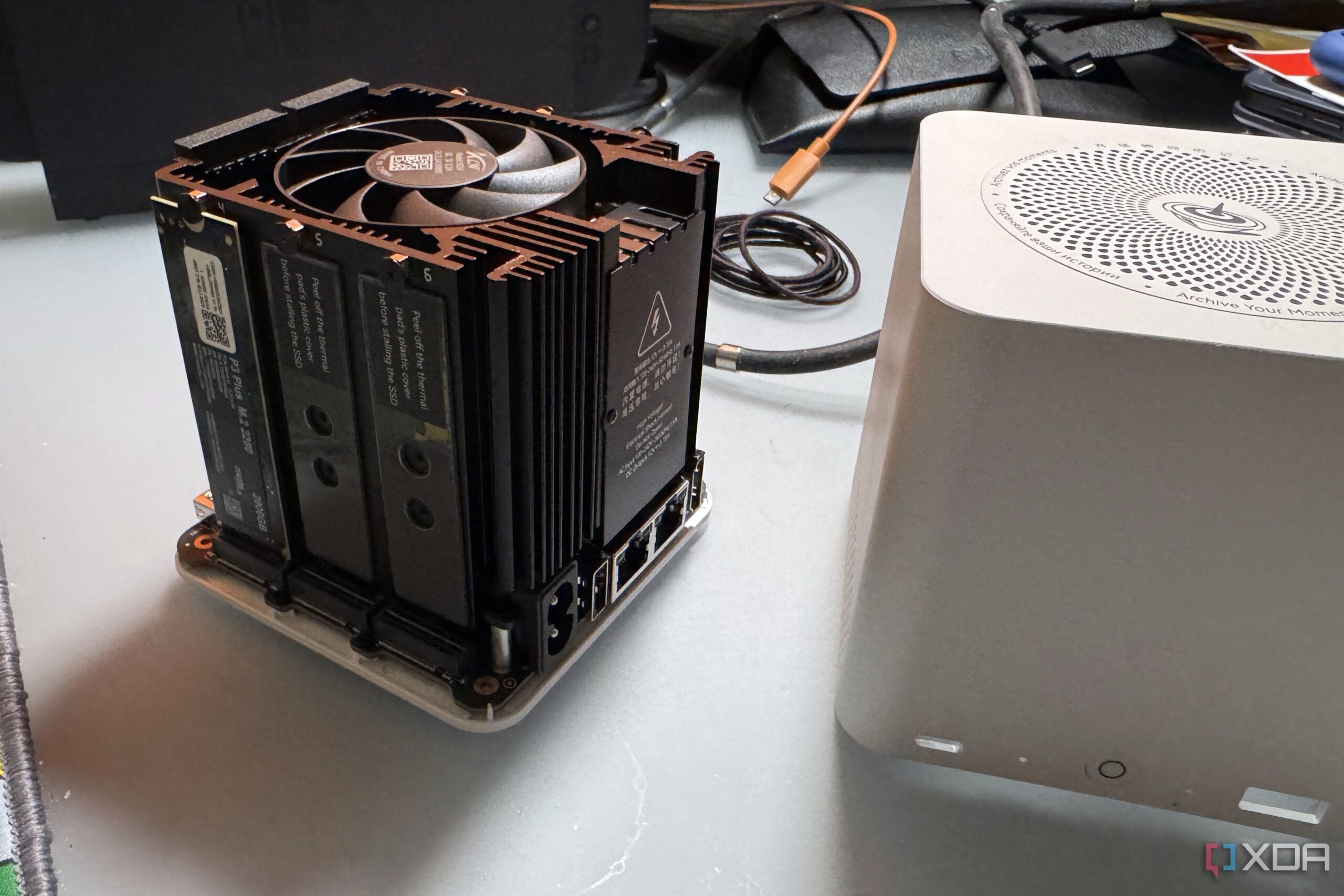Top Stories
User Transitions to TrueNAS from Synology, Citing Urgent Needs

UPDATE: A tech enthusiast has made a significant transition from Synology’s NAS to TrueNAS, driven by urgent storage needs and frustrations with vendor restrictions. The move, confirmed just hours ago, highlights a growing trend among users seeking more control over their data management.
The user, who has relied on Synology devices for years, found that essential features in DiskStation Manager (DSM) began to vanish. As the company tightened its grip on hardware compatibility, the need for a more flexible solution became clear. After extensive research, the decision to adopt TrueNAS Scale within Proxmox was made, marking a pivotal moment in their data storage strategy.
This transition is particularly relevant as many users face similar dilemmas. With storage capacities reaching their limits, the urgency to find a sustainable solution is paramount. The transition to TrueNAS not only provides enhanced functionality but also liberates users from restrictive vendor policies. The user noted, “I don’t want my NAS vendor to specify which drives I can use; it’s my data.”
The migration process involved significant technical planning, including passing through PCIe controllers and HBAs to the TrueNAS virtual machine. This careful implementation took time but ultimately resulted in a robust system capable of managing both storage and applications seamlessly.
One standout feature of TrueNAS is its integration with the ZFS file system, which offers self-healing capabilities and snapshot functionality. Unlike Synology, TrueNAS allows users to utilize existing drives, enabling them to transfer ZFS pools to any compatible device. This flexibility eliminates the fear of being locked into a single vendor, a concern that has increasingly resonated with NAS users.
Currently, the TrueNAS application store boasts 281 apps, providing alternatives for many applications previously used on Synology, including popular open-source tools like Copyparty and Calibre. This vast library empowers users to customize their NAS experience extensively.
The urgency of this transition is underscored by the fact that the user had nearly filled their Synology storage pool, necessitating an immediate upgrade. As they noted, “With transcoding disappearing from new NAS enclosures, I needed to figure out an exit plan.” The shift to TrueNAS not only alleviates storage concerns but also positions the user for future growth with a more adaptable system.
As of October 2023, the demand for flexible, user-friendly NAS solutions is rising. The move from Synology to TrueNAS is emblematic of a broader industry shift towards open-source solutions that prioritize user control and functionality. This trend is likely to resonate with many looking to escape restrictive vendor ecosystems.
Looking ahead, the user plans to build a rack-mount server featuring TrueNAS for storage and self-hosted applications. They expressed satisfaction with their decision, saying, “I wish I’d done it sooner.” With the growth of data needs and evolving technology landscapes, this transition reflects a critical moment for NAS users everywhere.
The urgency surrounding this shift also emphasizes the importance of user choice in the rapidly evolving tech landscape. As more users share similar experiences and frustrations, the demand for flexible storage solutions like TrueNAS will likely continue to surge.
For those contemplating a NAS transition, this case serves as a compelling reminder of the potential benefits of seeking alternatives that prioritize user autonomy and adaptability. The time for change is now, and the future of NAS technology is being shaped by those willing to take the leap.
-

 Politics1 week ago
Politics1 week agoDallin H. Oaks Assumes Leadership of Latter-day Saints Church
-

 Business1 week ago
Business1 week agoTyler Technologies Set to Reveal Q3 2025 Earnings on October 22
-

 Sports1 week ago
Sports1 week agoSteve Kerr Supports Jonathan Kuminga After Ejection in Preseason Game
-

 Lifestyle1 week ago
Lifestyle1 week agoDua Lipa Celebrates Passing GCSE Spanish During World Tour
-

 Lifestyle1 week ago
Lifestyle1 week agoKelsea Ballerini Launches ‘Burn the Baggage’ Candle with Ranger Station
-

 Health1 week ago
Health1 week agoCommunity Unites for Seventh Annual Mental Health Awareness Walk
-

 Entertainment1 week ago
Entertainment1 week agoZoe Saldana Advocates for James Cameron’s Avatar Documentary
-

 World1 week ago
World1 week agoD’Angelo, Iconic R&B Singer, Dies at 51 After Cancer Battle
-

 Health1 week ago
Health1 week agoRichard Feldman Urges Ban on Menthol in Cigarettes and Vapes
-

 Business1 week ago
Business1 week agoMLB Qualifying Offer Jumps to $22.02 Million for 2024
-

 Science1 week ago
Science1 week agoChicago’s Viral ‘Rat Hole’ Likely Created by Squirrel, Study Reveals
-

 Business1 week ago
Business1 week agoMega Millions Jackpot Reaches $600 Million Ahead of Drawings









